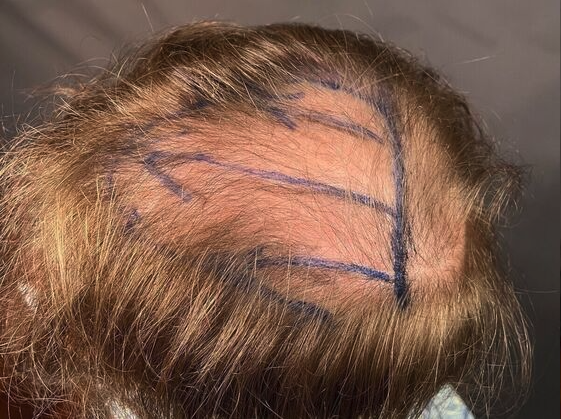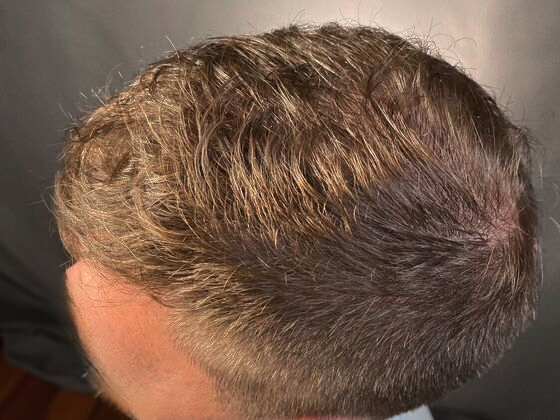FUE Hair Transplant Houston Restore Your Hair & Confidence
Address your hair loss with an expert who offers:
- Free Consultations
- Natural-Looking Results
- Minimal Scarring
- Advanced Techniques
"My hairline looks as if it's never receded"
Hear What a FUE Patient Has to Say About the Process
"Went to Arocha Hair Restoration during April of this year for a hair transplant to fix my hairline. It's been over 6 months since my procedure and my hairline looks as if it's never receded. Very thankful to Dr.Arocha and his team for their expertise - it was the best 12 grand I've ever spent!"
- Jacob Chen, an Arocha Hair Restoration Patient

What Is FUE Hair Transplant?
Also known as follicular unit excision, FUE is a hair transplantation method in which individual hair follicles are harvested from a donor area and transplanted into a balding or thinning area of the scalp.
FUE Vs. FUT Hair Restoration
No matter which technique you choose, your results will be natural! That is because they both yield intact follicular units or grafts, the raw material Dr. Arocha uses to create your hair artwork. The depth is minimal in both—once the dermis is bridged, the follicles (FUE), or the strip (FUT) can be liberated. But there are differences to consider. In FUE, the punches are tiny, well below the threshold of visible detection (.9mm). Most of the time, we use a .6mm internal diameter punch, ensuring the fastest healing within a matter of a few days. The resultant scars are not visible to the naked eye.
During FUT, Dr. Arocha scores the perimeter of the donor ellipse past the dermis, then uses his proprietary technique to liberate the strip safely. Dr. Arocha then closes in two layers to minimize tension across the strip. Surgical wounds require 6–12 months to mature, during which tension or pulling vectors at the margins must be minimized to ensure very fine surgical scars. Most FUT scars are not visible, but if pulling at the margins is not minimized during the 6–12 months of maturation, the resultant scar can widen.
Benefits of FUE
Quicker Recovery
Because FUE does not require incisions or use strip harvesting like FUT, patients do not need stitches, and recovery is generally quicker. Patients typically return to work within one week of surgery.
Wider Candidate Pool
Patients who are not candidates for FUT may qualify for FUE. Patients who need fewer grafts, experience tightness in their scalp, wear their hair short, or have already depleted donor sites from previous transplant procedures all make good candidates for FUE.
Less Invasive
In our FUE surgeries, we always use a tiny punch smaller than .9mm, most commonly only .6-.7mm. This ensures faster healing, yielding scars so small that they are not visible with the naked eye. FUT surgeries require a linear incision that usually heals with a thin linear scar.
Natural-Looking Results
Thanks to its less-invasive nature, FUE provides results that appear completely natural, without a noticeable linear scar.
The Cost of FUE
Your FUE hair transplant in Houston, TX, can cost anywhere from $4,000-$15,000.
Your unique cost will depend on factors such as your:
Degree of Hair Loss: Larger areas and more advanced stages of hair loss require more grafts from the donor area, increasing your final price.
Hair Transplant Goals: The thickness of the hair is a personal preference that's different for everyone. While some patients desire a fuller, thicker head of hair, others are happy with a modest improvement. The thicker you want your hair to be, the higher the cost will be.
While insurance won't help cover the cost of your hair transplant, our Houston hair restoration office accepts financing through CareCredit®. This third-party lender allows patients who qualify to pay for their hair restoration in affordable monthly installments.

Results Worth the Cost
Are You Experiencing Hair Loss? You're Not Alone
According to Penn Medicine, hair loss affects more than 50 million men and 30 million women in the United States.
Explore an FUE Hair Transplant Book a Consultation Today
A FUE hair transplant is a fantastic hair restoration option for many patients. You can book a consultation now with Dr. Bernardino Arocha, a hair restoration expert with proven results, and find out if FUE or other hair restoration options may be right for you.
The FUE Procedure
The length of hair transplant surgery can vary greatly depending on how many hair follicles are needed, but most FUE procedures last between two and four hours.
Hear From Another Real Patient
"I’m from Chicago and have been going to Dr. Arocha for over 12 years and had 3 procedures done by him. I’m very pleased with my results. Dr. Arocha and his team are very courteous and professional. Dr. Arocha listens to you and recommends a plan which would be in your best interests. His entire team is very knowledgeable and supportive. They make you feel comfortable during the entire process. I highly recommend Dr. Arocha for your hair transplant needs."
Farooq Hussain
Recovering From FUE Surgery Common Side Effects


Following FUE, the scalp will be swollen and sensitive. Patients return home the same day and may resume most normal activities within a few days. Common side effects include:
- Light bleeding
- Tenderness
- Mild pain
- Itching
- Swelling
Patients must not touch the scalp or remove any scabs that arise from the healing process. The newly transplanted follicles are highly vulnerable during the first few weeks of recovery and can become dislodged due to excess friction or stress. Dr. Arocha provides detailed post-op instructions to all of his patients to help them maximize their recovery and receive optimal results.
Enhance Facial Hair With FUE
Similar to the hair on our heads, facial hair can greatly impact how you look and how you feel about yourself. Hair transplant methods like FUE can be an option for filling in sparse areas of the face, such as the:
Your facial hair can frame your face and facial features—let Dr. Arocha add definition to these areas and draw attention to your features.

“Dr Arocha’s results speak for themselves.” Top Reviews for a Top Hair Loss Doctor
I first went to Advanced Hair in Houston and had a procedure with Dr. Gaffney. I was unhappy with that procedures results and after a year and went searching for a new doctor. 1 year after my first procedure I found Dr. Arocha on instagram…Dr. Arocha was very kind and actually met with my wife and I before the surgery and answered all questions we had. In summary, if you value radio ads and shiny high rise office buildings, go to the big companies that advertise on the radio. If you want a strong hairline, go to Dr. Arocha.
View on GoogleI’d like to take this opportunity to share with you my opinion regarding the standard of care I experienced at Arocha Hair Restoration… This is not your average hair transplantation, performed largely by technicians. On the contrary, Dr Arocha’s skilled hands and professional judgement are present in every phase of the procedure. This level of surgeon involvement is increasingly rare in the hair transplantation industry. Dr Arocha’s results speak for themselves. He has a long history of satisfied patients–and I am one of them.
View on Google




